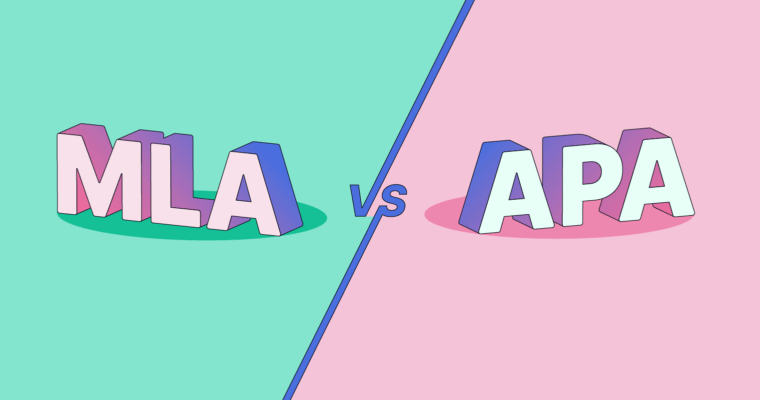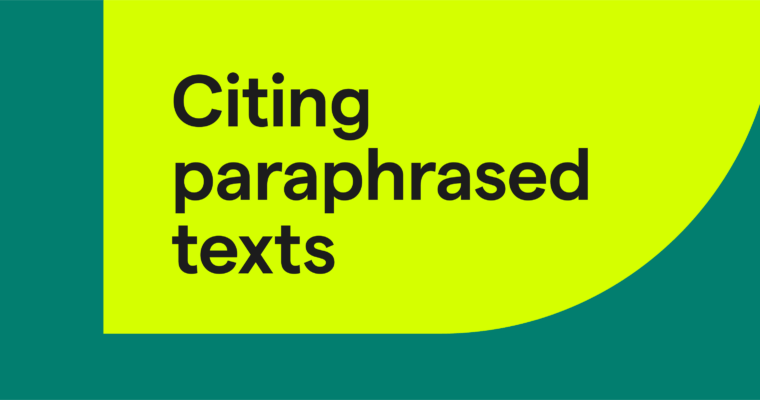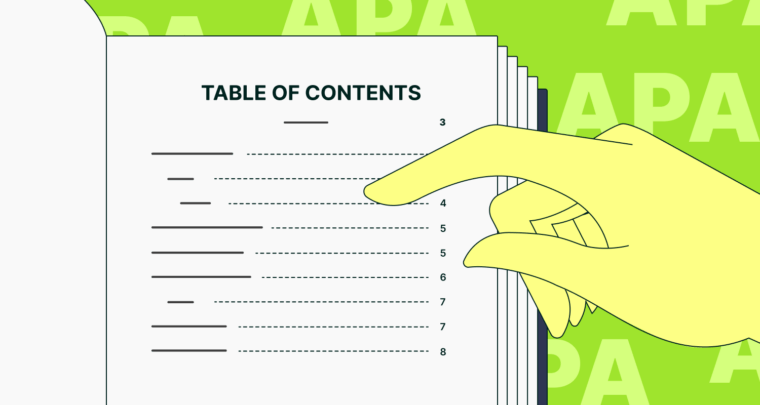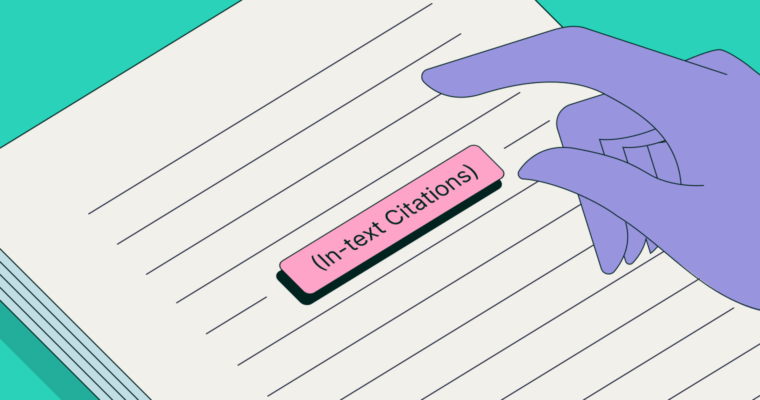
MLA and APA are two different methods for styling an academic paper. Each has its own rules and guidelines for citing sources, formatting your pages, and usage (such as when to spell out numbers). Because each format is tied to different academic subjects, chances are you’ll have to use both at some point—which means you’ll need to learn the differences between them.
In this guide, we explain what exactly separates MLA and APA. We’ll talk about the differences between MLA and APA referencing styles, plus we’ll contrast their different approaches to formatting papers. We’ll also include some MLA and APA examples so you understand how to use either style.
MLA vs. APA: What’s the difference?
MLA format and APA format are different sets of rules for how an academic paper should look. They both outline, with their own instructions, how to do things like cite sources, structure a paper, and format pages. They both also provide style guidelines, like instructions for which words to capitalize in titles, how to write authors’ names, or when to spell out numbers.
Typically, which format you use depends on the subject. MLA format is preferred for the humanities: languages, literature, philosophy, religion, ethics, and the arts, like film or painting. APA format is used by the social sciences: psychology, sociology, anthropology, education, and some business topics, along with engineering.
MLA vs. APA vs. Chicago
The MLA and APA formats, along with the Chicago format, make up the three main styles of academic writing. While they have a lot in common, each still has its own unique and particular rules for citations, grammar, and page formats.
It’s not so much about choosing your favorite; which style you use depends on the subject you’re writing about or the restrictions of your assignment. We already mentioned which subjects use MLA and APA above, while Chicago is the preferred style for history and historical topics.
Difference between MLA and APA referencing style
Even though there are numerous variations in formatting and grammar between the two styles, the biggest difference between MLA and APA is the referencing style. Each format has its own way of handling citations that includes both the big picture (like how to write the bibliography page) and the minutiae (like whether or not to include the year of publication in parenthetical citations).
MLA vs. APA: In-text citations
Embedded directly “in the text,” in-text citations are succinct shout-outs to the source where you got your information. Unlike the full citations in the bibliography, in-text citations contain only the bare essentials and spare the details. The question is what to include in in-text citations; MLA and APA each have different criteria.
In MLA, in-text citations contain the author’s surname and the relevant page number, although the page number can be excluded if the information is broad. No commas or abbreviations for page are needed.
The Greek myth of Sisyphus provides the perfect analogy for humankind’s struggle of living with the absurdity of life (Camus 78).
In APA, in-text citations contain the last name of the author, the year of publication, and the page number. Unlike in MLA, in APA the different pieces of information in parenthetical citations are separated by commas. Abbreviations are also used: p. for page and pp. for pages.
The researchers suggested that extroverts were less affected because they “have a strong sense of control over time,” so temporarily losing control didn’t matter much (Sobol et al., 2021, p. 455).
Like in MLA, the page number can be omitted in APA if the information is broad; however, it must be included if you’re reciting a direct quote.
For both MLA and APA, you can replace the page number with another kind of location marker. If you’re citing a source that’s not a book, such as a documentary film or poem, you can use a different location marker, such as a timestamp or line number, instead of the page number.
To expedite the entire citation process, you can also use our free citation generator for both in-text and full citations. Simply upload all the source information, and our widget will create a perfect citation that you can just copy and paste into your paper.
MLA vs. APA: Bibliography
One of the biggest distinctions between MLA and APA is the bibliography page, where you list the full citations of all the sources used in the paper. MLA calls this page the works cited page, while APA refers to it as the reference page.
The rules for how to write a full citation are different based on both the format and the type of source. For example, the same source would be cited differently in MLA than in APA: The year of publication would be in a different place, and the author’s name would be written differently.
But even within the same format, different types of sources, like books and journal articles, have different formats for full citations. We have guides for how to cite each type of source in MLA, APA, and Chicago that you can check for quick reference—you can find a master list with all the links in the main guides for APA and MLA.
Just to give you an idea of how full citations are supposed to look in each format, below we’ve included APA and MLA examples for the book Thinking, Fast and Slow, which fits appropriately in both psychology and philosophy.
MLA format:
Kahneman, Daniel. Thinking, Fast and Slow. Farrar, Straus and Giroux, 2011.
APA format:
Kahneman, D. (2011). Thinking, fast and slow. Farrar, Straus and Giroux.
Notice the difference in how the author’s name is written. Both formats invert names, but MLA spells out the first name, while APA abbreviates it. Another big contrast is where the year of publication goes; MLA tacks it onto the end, whereas APA puts it at the beginning, after the author’s name, in parentheses. Last, the title of the book follows title capitalization in MLA, but it’s written in sentence capitalization in APA.
When formatting the bibliography page itself, both formats’ structures are actually pretty similar. Both MLA and APA follow these rules for their bibliographies:
- Entries are listed in alphabetical order by the last name of the author.
- The title is centered at the top of the page (for MLA the title is Works Cited; for APA the title is References).
- Entries all use a hanging indent: The first line is not indented, but all subsequent lines are indented by half an inch.
- The entire page is double-spaced.
However, don’t let the similarities fool you. There are plenty of tiny details in the citations themselves that can trip you up. Double-check with our guides to make sure you’re using the correct formula for your source in the format you’re following.
MLA vs. APA: Style and paper format
Aside from citations, MLA and APA each have slightly different rules for grammar and paper formatting. Although subtle, these differences can be hard to keep track of, especially if you’re used to one style and must switch to another. So below, we cover the major differences between MLA and APA, all in one place for quick reference.
MLA vs. APA: Style
For starters, both MLA and APA suggest taking a formal tone for academic writing. Both advise against using contractions and casual language, like slang or colloquialisms. Other similarities include applying the title case for your paper’s headings and using the Oxford comma (the serial comma).
One big difference, though, is how each format handles numbers. APA has a fairly straightforward approach to numbers: Spell out zero through nine and use numerals for 10 and above.
MLA, however, has a more complicated system: Spell out numbers that can be written as one or two words but use numerals for all the others. So, in MLA, you would spell out one million but use numerals for 101.
There are small exceptions to these rules in each format (which we explain in the main APA and MLA guides), such as using numerals with measurements or items in a series. One thing both formats agree on is to spell out numbers if they begin a sentence.
MLA vs. APA: Title page and paper format
APA format requires a title page with particular formatting, while in MLA the title page is optional.
An APA title page (for student papers) includes your school, the course number, instructor name, and assignment due date. In MLA this information is included in the heading of the first page, written flush left before the main text begins.
Another area of contrast between MLA and APA are footnotes and endnotes. While both styles prefer parenthetical in-text citations over footnotes and endnotes, each style has its own criteria for when to use notes. APA uses footnotes only for commentary and copyright attribution, whereas MLA allows them for citing multiple sources at once, noting editions or translations, or explaining unusual documentation practices, like the use of alternative line numbers when citing a poem.
Additionally, both APA and MLA have slightly different criteria for when to use block quotes. MLA requires a quotation to be set apart in block quotes if it is longer than four lines of text, whereas APA requires it for passages of forty words or more.
The actual format of the block quote is the same for MLA and APA: Indent the entire passage an additional half an inch, with no extra indentation for the first line. For any additional paragraphs beyond the first, indent the first line an additional half an inch.
But there are plenty of formatting similarities in the styles as well. Both MLA and APA use running heads, with the page number at the top of each page. Both formats prefer 8½-by-11-inch paper with 1-inch margins on all sides (disregarding the running head). Both recommend simple fonts like 10-to-12-point Times New Roman and Arial.
MLA and APA take practice
The differences between MLA and APA may seem daunting at first, especially when you’re unfamiliar with one or the other. However, once you get used to the rules, you’ll be able to apply them without thinking.
After all, the majority of your writing won’t fall into the problematic areas listed above—those are mostly special instances that occur only a handful of times in a paper. The real focus of your writing should be your content, regardless of whether you use MLA or APA.





